
“Bridge to Nowhere” in Whanganui National Park, New Zealand
By Kaushik, Amusing Planet, 15 January 2013.
By Kaushik, Amusing Planet, 15 January 2013.
One of the most visited attractions in Whanganui National Park, New Zealand, is the “Bridge to Nowhere” - an abandoned and isolated concrete bridge spanning the Mangapurua Stream in the middle of the rainforest. With no roads leading to it, the bridge looks ridiculously out of place. It is accessible only by jet boat or kayak, followed by a 40 minute hike along maintained bush trails.
The bridge was built across the deep Mangapurua Gorge to provide access to an area where the government was opening up land in 1917 for pioneering farmers, mainly soldiers who had returned from World War I. The intention was to build roads to it later, but the area proved to be so remote and unsuitable for farming that the venture failed and the farms reverted to native bush.
Previously, a wooden swing bridge for horses provided access to the valley. After years of agitation from the local community, a more robust concrete road bridge was constructed in 1936. However it was used for only six years. The Mangapurua Valley Soldiers Settlement walked off their land in 1942 after decades of battling hardship caused by the valley's poor soils. The forest grew back, obliterating all signs of habitation except for the bridge.
A sign on the bridge tells the story:
Started in January 1935 and completed in June 1936, this bridge was built by the Raetihi firm of Sandford and Brown, for the Public Works Department. It is 130 feet long, and 125 feet above the stream. The cost of labour was 598 pounds 11 shillings 7 pence, and cartage of all materials (via the Mangapurua Valley road) cost 419 pounds 14 shillings. Unfortunately the cost of materials was not recorded. Aggregate for the concrete is said to have been transported from the Rangitikei River. The completion of the bridge was delayed considerably due to floods, slips, and the consequent delay in the supply of materials. The bridge was built to facilitate vehicular access to the Wanganui River, to link the settlers of the valley with the riverboat service. In 1917 the Government opened up the valley for settlement by soldiers returning from World War I. Virgin forest was cleared, and a total of 35 holdings developed. A school was opened, and for some years the valley prospered. However economic hardship, and problems associated with the remoteness and difficulty of access, resulted in many families abandoning their farms. By 1942 there were only 3 families left. After a major flood in January 1942 the Government declined to make further funds available for road maintenance, and it officially closed the valley in May 1942. The disappearing road line, old fence lines, stands of exotic trees, occasional brick chimneys, and this bridge serve as reminders of the ill fated settlement of the Mangapurua valley.
The Bridge to Nowhere can be reached by jet boating or canoeing down the Whanganui River from either Pipiriki or Whakahoro to the Mangapurua Landing. From there, a gentle 40-minute walk brings you to the bridge site. Alternatively, a three-day tramp from Whakahoro to the north, via the Kaiwhakauka and Mangapurua valleys, will also bring you to the bridge. There are several tour companies which operate on the Whanganui river, with one even having a lodge you can stay at on the river.
The most isolated bridge ever.
Top image: Bridge to Nowhere
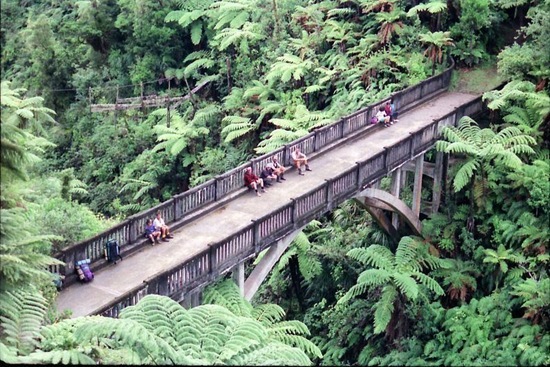
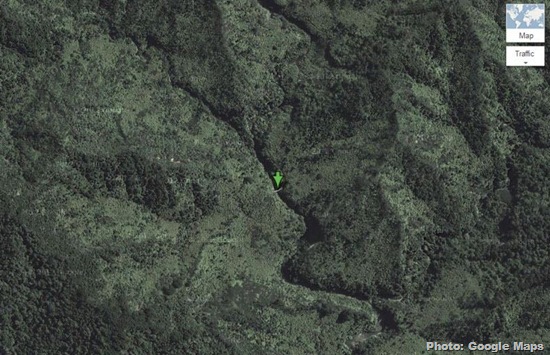
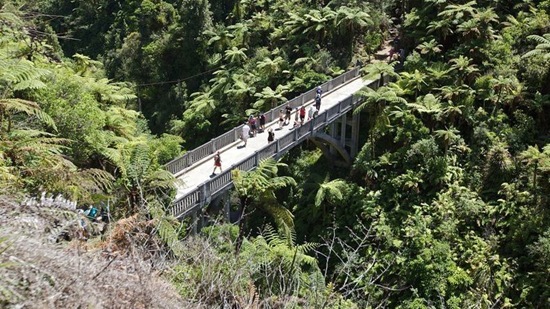
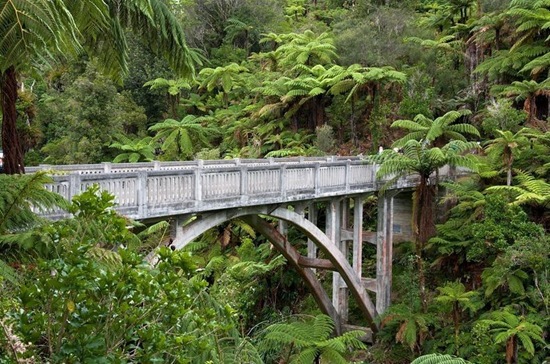

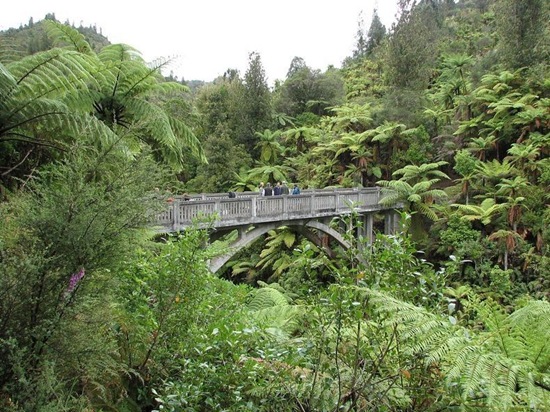
No comments:
Post a Comment
Please adhere to proper blog etiquette when posting your comments. This blog owner will exercise his absolution discretion in allowing or rejecting any comments that are deemed seditious, defamatory, libelous, racist, vulgar, insulting, and other remarks that exhibit similar characteristics. If you insist on using anonymous comments, please write your name or other IDs at the end of your message.